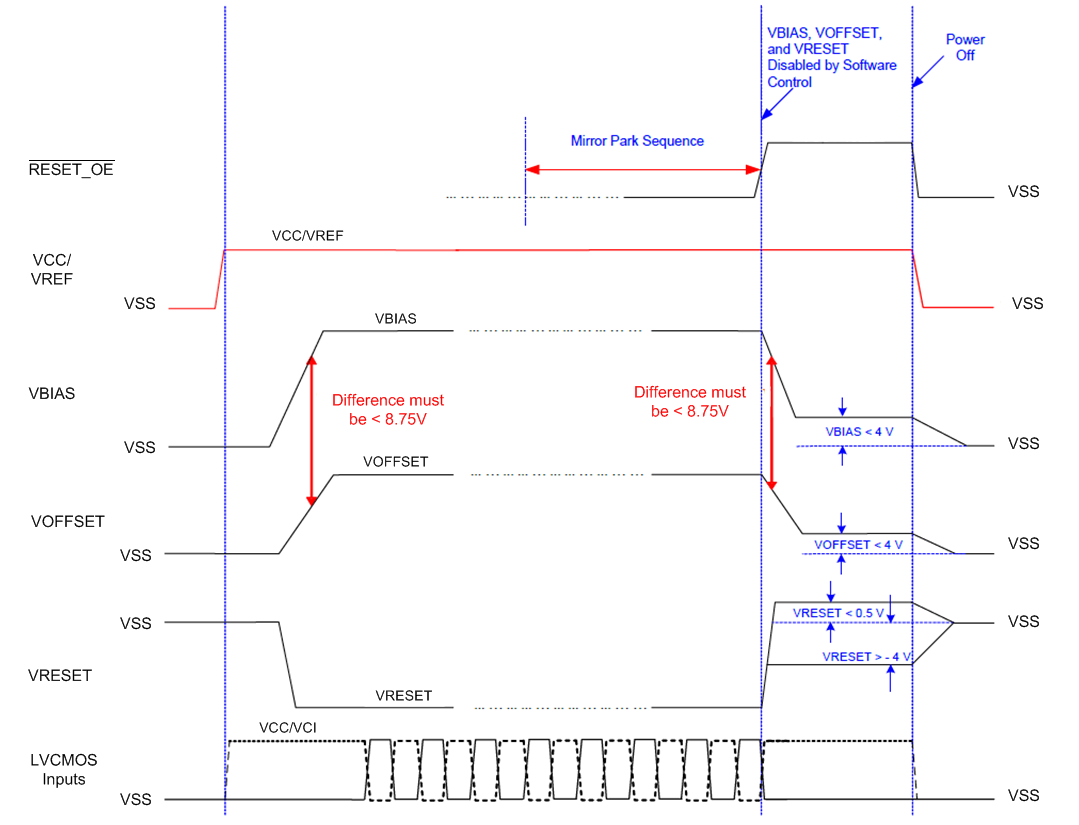ZHCSJA3B January 2019 – May 2022 DLP4500NIR
PRODUCTION DATA
- 1 特性
- 2 应用范围
- 3 说明
- 4 Revision History
- 5 Chipset Component Usage Specification
- 6 Pin Configuration and Functions
-
7 Specifications
- 7.1 Absolute Maximum Ratings
- 7.2 Storage Conditions
- 7.3 ESD Ratings
- 7.4 Recommended Operating Conditions
- 7.5 Thermal Information
- 7.6 Electrical Characteristics
- 7.7 Timing Requirements
- 7.8 System Mounting Interface Loads
- 7.9 Micromirror Array Physical Characteristics
- 7.10 Micromirror Array Optical Characteristics
- 7.11 Typical Characteristics
- 8 Detailed Description
- 9 Applications and Implementation
- 10Power Supply Recommendations
-
11Layout
- 11.1 Layout Guidelines
- 11.2 Layout Example
- 12Device and Documentation Support
- 13Mechanical, Packaging, and Orderable Information
10.3 DMD Power Supply Power-Down Procedure
- Command the chipset controller to execute a mirror-parking sequence. See the controller data sheet (listed in Section 12.2.1) for details.
- Power down VBIAS, VOFFSET, and VRESET in any order, provided that the maximum delta voltage between VBIAS and VOFFSET is not exceeded (see Section 7.1 for details).
- Wait for VBIAS, VOFFSET, and VRESET to each discharge to a stable level within 4 V of the reference ground.
- Power down VCC and VREF in any order.
Note:
During the power-down procedure, the DMD LVCMOS inputs should be held at a level less than VREF + 0.3 V.
Note:
Power-supply slew rates during power down are unrestricted, provided that all other conditions are met.
 Figure 10-1 Power-Up and Power-Down Timing
Figure 10-1 Power-Up and Power-Down Timing